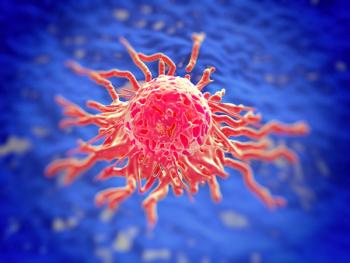
Preoperative RT Useful in Borderline Resectable Soft-Tissue Sarcoma
The use of preoperative radiotherapy may be a reasonable approach to patients with borderline resectable soft-tissue sarcomas, according to the results of a retrospective study.
The use of preoperative radiotherapy may be a reasonable approach to patients with borderline resectable soft-tissue sarcomas, according to the results of a retrospective study. The study found that preoperative radiotherapy led to tumor reduction in 80% of patients, with the largest size reductions seen in patients with myxoid liposarcomas.
“There is currently no consensus of the ideal timing for adjuvant radiotherapy, which may be given either before or after surgery,” wrote researchers from London Hospitals NHS Foundation Trust. “Comparisons of preoperative and postoperative radiotherapy indicate at least equivalent outcomes for local control rates and overall survival. However, preoperative radiotherapy offers potential advantages of reduced late toxicity and improved functional outcomes, while maintaining good local control rates.”
In order to understand more about the effect of preoperative radiotherapy as a neoadjuvant treatment in this patient population, the researchers conducted a retrospective study of 68 patients with soft-tissue sarcoma who had undergone radiotherapy between December 2004 and July 2011. The results of the study were
The majority of tumors studied were located in the extremities, specifically, the lower limbs, and about one-third of the tumors were myxoid liposarcoma. Median tumor size was 12.5 cm.
Sixty patients underwent radiotherapy with 50 Gy in 25 daily fractions given during 5 weeks of treatment. Eight patients had a regimen of 44 Gy to 50.4 Gy in 22 to 28 daily fractions.
Eighty percent of patients had a reduction in tumor volume after preoperative radiotherapy. The median change in maximal tumor dimension was –13.6% and the median change in volume was –33.3%.
“Our cohort included 19 patients with myxoid liposarcoma, which are increasingly being recognized as being particularly radiosensitive,” the researchers wrote. “Certainly we observed greater reductions in the median maximal tumor diameter and volume than for other histologies, with values of –21.4% and –64.2%, respectively.”
In contrast, 20% of patients had an increase in tumor volume. However, complete surgical resection was achieved in 93% of patients, including the 11 patients who had an increase in tumor volume; 7% of patients had microscopically positive margins.
“This suggests that it may be possible for some patients to continue and complete a course of preoperative radiotherapy despite an increase in tumor volume during treatment,” the researchers wrote.
The 2-year local relapse-free survival was 87.5% and the 2-year overall survival was 74.7%. Eight patients had a local relapse between 2 to 24.8 months after surgery.
Newsletter
Stay up to date on recent advances in the multidisciplinary approach to cancer.
































































































